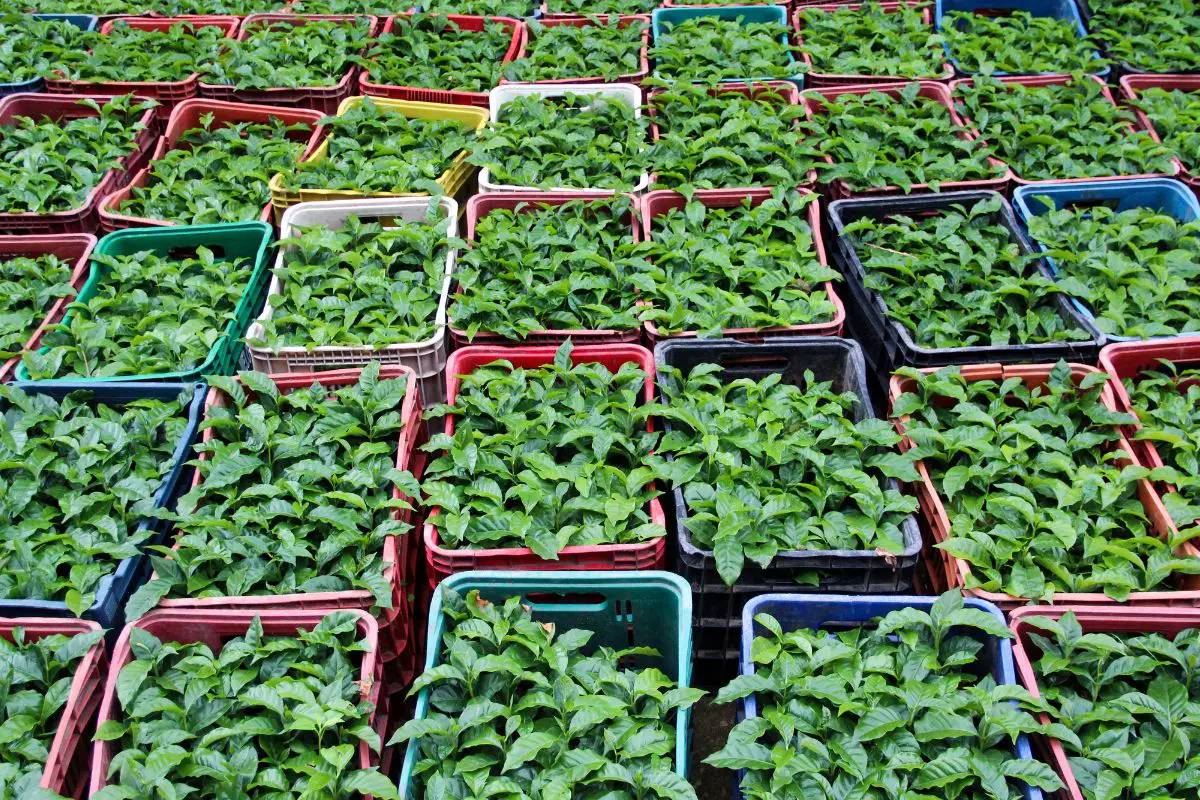Table of Contents
*This post may contain affiliate links. As an Amazon Associate we earn from qualifying purchases.
Espresso. The word alone sends shivers down the spine of coffee lovers everywhere. It’s bold, it’s rich, it’s creamy, and it’s absolutely irresistible. But have you ever stopped to think about where those little beans come from? I mean, they don’t just magically appear in your cup. They have to be grown, harvested, processed, roasted, and packaged before they can make their way into your morning latte.
In this post, we’re going to take a deep dive into the world of espresso beans. We’ll learn about the different types of beans used for espresso, the regions where they’re grown, and the various steps involved in bringing those beans from the farm to your cup. So buckle up, folks. It’s going to be a wild ride!
Types of Coffee Beans used for Espresso
When it comes to espresso beans, there are two main types: Arabica and Robusta. Now, I know what you’re thinking. “Arabica? Robusta? I thought all coffee was just…coffee.” Well, my friend, you’re not alone. But the truth is, these two types of beans are as different as night and day.
Arabica beans are known for their mild, smooth flavor with notes of fruit and caramel. They’re grown at high altitudes and have a lower caffeine content than Robusta beans. On the other hand, Robusta beans have a bold, bitter flavor and are grown at lower altitudes. They have a higher caffeine content, which makes them a popular choice for espresso.
There are also blends of Arabica and Robusta beans, which offer the best of both worlds. These blends can vary in their ratios of Arabica to Robusta, but they often result in a balanced, full-bodied espresso.
Growing Regions for Espresso Beans
Espresso beans are grown all over the world, but the largest producers are South America, Africa, and Asia. Each region has its own unique climate and growing conditions, which can greatly impact the flavor of the beans.
For example, South American espresso beans are often grown in the shadow of the Andes Mountains, where the cool, moist air is ideal for growing Arabica beans. African espresso beans, on the other hand, are grown in the equatorial regions, where the warm, dry air is better suited for Robusta beans.
And let’s not forget about Asia, where espresso beans are grown in countries like Indonesia, Vietnam, and India. These regions offer a unique blend of tropical climates, rich soil, and abundant rainfall, which produces some of the most flavorful and aromatic espresso beans in the world.
Planting and Cultivation of Espresso Beans
So, you want to grow some espresso beans, do you? Well, I hate to break it to you, but it’s not as easy as just planting a seed in the ground and letting it go. There’s a lot more to it than that.
First, you need the right soil. Espresso beans need well-draining soil that’s rich in organic matter. They also prefer a slightly acidic soil with a pH between 6 and 6.5.
Next, you have to worry about water. Espresso beans need a consistent supply of water, but they can’t tolerate standing water. So make sure you have good drainage in your soil to prevent root rot.
And let’s not forget about fertilizer. Espresso beans need plenty of nutrients to grow, so make sure you use the right type of fertilizer for your soil. Organic fertilizers, such as compost and cow manure, are great for providing the plants with the nutrients they need to grow healthy and strong.
Once your soil is ready, it’s time to plant your espresso beans. They’re usually grown from seedlings, which are started in nurseries and then transplanted to the field when they’re big enough.
Once the seedlings are in the ground, they need plenty of sun and warmth to thrive. In most regions, espresso plants are grown in full sun and are pruned regularly to encourage healthy growth and high yields.
Harvesting Espresso Beans
Alright, so you’ve got your seedlings planted, they’re growing like crazy, and now it’s time to harvest your espresso beans. But wait, it’s not as simple as just picking the beans off the plant and calling it a day.
Espresso beans are usually hand-picked, which is a labor-intensive process that requires a lot of patience and skill. The beans are only picked when they’re fully ripe, which is usually indicated by their dark red color.
Once the beans are picked, they’re sorted according to size and quality. The best beans are kept for roasting, while the rest are sold for lower-quality products, such as instant coffee.
Processing Espresso Beans
Now that the beans have been harvested, it’s time to process them. Processing is the step that removes the outer layers of the bean, leaving just the inner seed.
There are two main methods for processing espresso beans: wet and dry.
The wet method involves soaking the beans in water for several days. This allows the outer layers of the bean to ferment and soften, making it easier to remove them.
The dry method, on the other hand, involves laying the beans out in the sun to dry. This method is slower, but it results in a more consistent flavor in the final product.
Roasting Espresso Beans
And now, for the final step in the journey of the espresso bean: roasting. This is the step that transforms those green, unroasted beans into the rich, aromatic espresso we all know and love.
There are many different roasting techniques, each with its own unique flavor profile. Light roasts are usually mild and fruity, while dark roasts are bold and smoky.
The roasting process also has a big impact on the caffeine content of the beans. The longer the beans are roasted, the less caffeine they contain.
Grinding Espresso Beans
So, you’ve got your roasted espresso beans, and now it’s time to grind them. This is an important step, as the grind size determines how easily the water will flow through the beans and extract their flavor.
For espresso, you want a fine grind that’s consistent in size. This will ensure that the water is evenly distributed throughout the grinds, resulting in a balanced and flavorful shot of espresso.
Storing Espresso Beans
Once your espresso beans are ground, it’s time to store them. But wait, it’s not as simple as just throwing them in a bag and forgetting about them.
Espresso beans are best stored in an airtight container, away from light, heat, and moisture. This will prevent them from losing their flavor and aroma over time.
It’s also important to store your espresso beans in a cool, dry place. The ideal temperature is around 60-70°F, and you should avoid storing them in the refrigerator or freezer, as the temperature fluctuations can damage the beans.
Brewing Espresso With Your Beans
Finally, it’s time to enjoy the fruits of your labor. Or, in this case, the fruits of the labor of the farmer who grew your beans, the processor who processed your beans, the roaster who roasted your beans, and you, who ground your beans and stored them properly. You’ve come a long way, and it’s time to brew some delicious espresso.
There are many different methods for brewing espresso, but all of them require a high level of pressure to force hot water through the finely ground beans.
Whether you’re using a traditional espresso machine, a moka pot, or an AeroPress, the key to brewing great espresso is to use the right grind size and the right amount of pressure.
So, there you have it, folks! A complete guide to the journey of the espresso bean, from seed to cup. From the soil to the roaster, every step is important in creating the perfect cup of espresso. So, go ahead and treat yourself to a delicious shot of caffeine, you deserve it!

